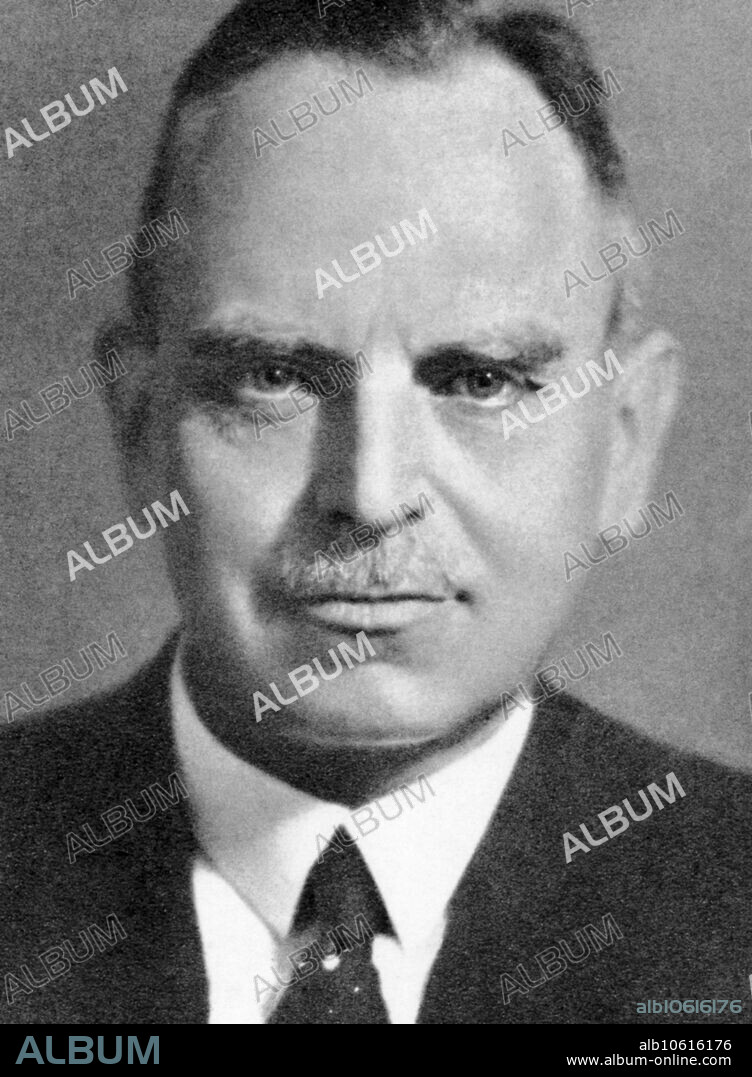alb10616176
Otto Hahn, German Chemist

|
Añadir a otro lightbox |
|
Añadir a otro lightbox |



¿Ya tienes cuenta? Iniciar sesión
¿No tienes cuenta? Regístrate
Compra esta imagen.
Selecciona el uso:

Título:
Otto Hahn, German Chemist
Descripción:
Ver traducción automática
Otto Hahn (1879-1968), German chemist, Nobel Laureate and discoverer of nuclear fission and a pioneer in the fields of radioactivity and radiochemistry. He is regarded as "the father of nuclear chemistry". Hahn was a courageous opposer of Jewish persecution by the Nazis and after World War II he became a passionate campaigner against the use of nuclear energy as a weapon. Hahn's family wanted him to be an architect, but he was eventually allowed to study chemistry at Marburg. After his doctorate, Hahn studied with Ramsay in London then Rutherford in Canada. He returned to Germany in 1910. It was in the 1930s that he did his most important work. On bombarding uranium nuclei with slow neutrons, he detected the production of barium rather than the radium he expected. Against the knowledge of the day, he suggested that the nucleus had been split. He reluctantly published in 1938, and received the 1944 Nobel Prize for Chemistry.
Personas:
Crédito:
Album / Science Source
Autorizaciones:
Modelo: No - Propiedad: No
¿Preguntas relacionadas con los derechos?
¿Preguntas relacionadas con los derechos?
Tamaño imagen:
2880 x 3920 px | 32.3 MB
Tamaño impresión:
24.4 x 33.2 cm | 9.6 x 13.1 in (300 dpi)
Palabras clave:
1879 • 1938. S. XX • 1944 • ALEMAN • ALEMANA • ALEMANES • ALEMANIA • BLANCO Y NEGRO • CIENCIA • CIENTIFICO • EN CONTRA • EUROPA • FAMOSA • FAMOSO • FISIÓN • FOTO • FOTOGRAFIA • FOTOGRAFÍAS • GENTE • HISTORIA • HISTORICO • HOMBRE • JUDIO • NEUTRONES • NOBEL • NUCLEAR • NUCLEO • NÚCLEOS • OTTO • PADRE • PERSECUCION • PERSONA • PERSONALIDAD • PIONERO • PORTRAIT • PREMIO NOBEL • QUIMICA • QUIMICO • RETRATO DE HOMBRE • RETRATO • RETRATOS • S. XX • SIGLO XX • SIGLO
 Pinterest
Pinterest Twitter
Twitter Facebook
Facebook Copiar enlace
Copiar enlace Email
Email
